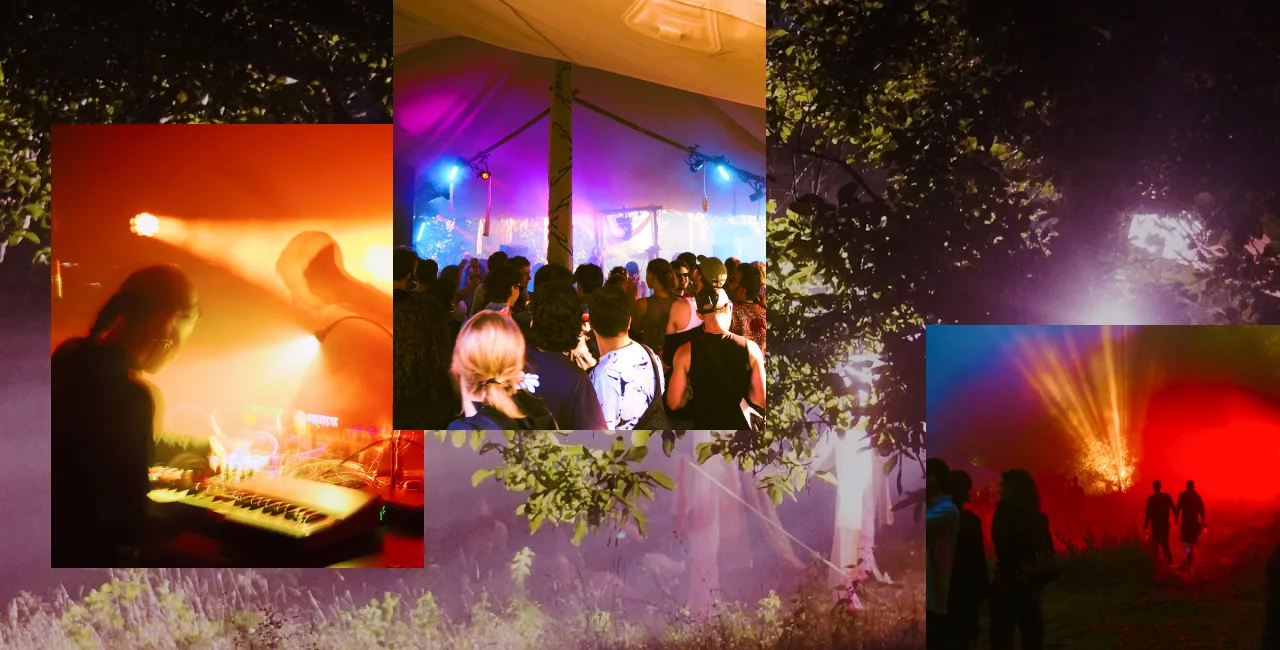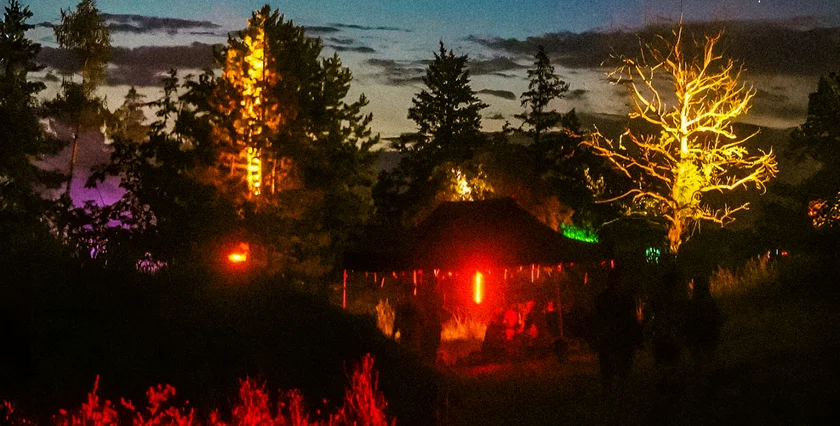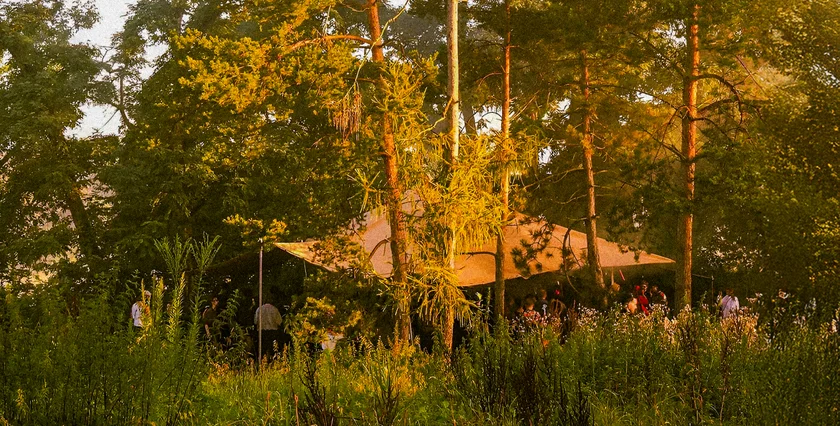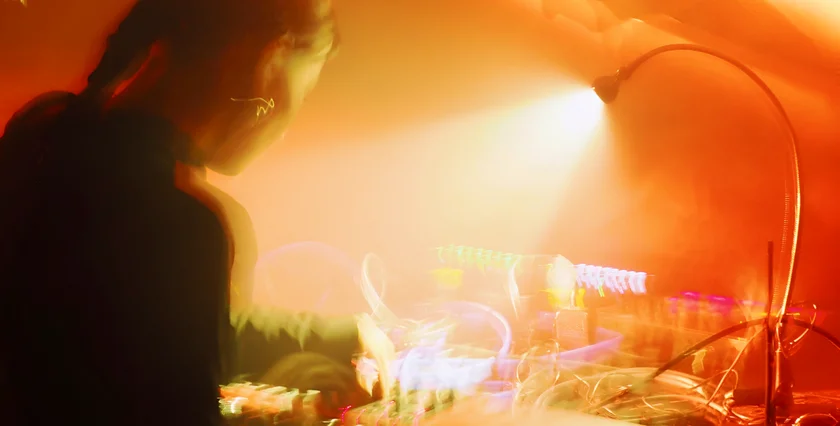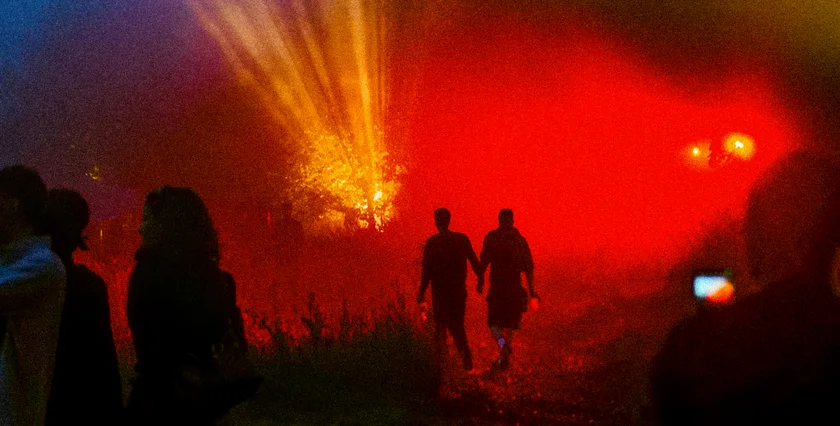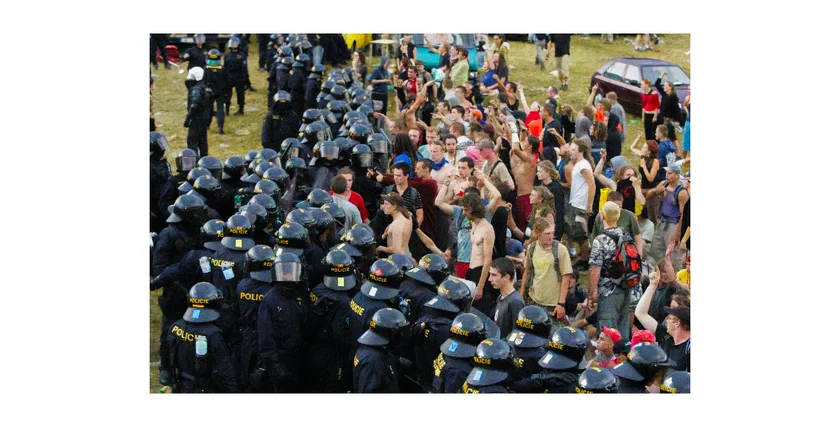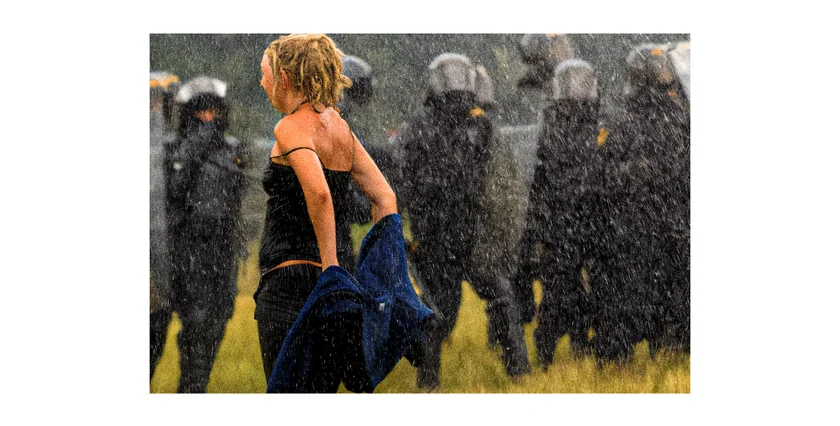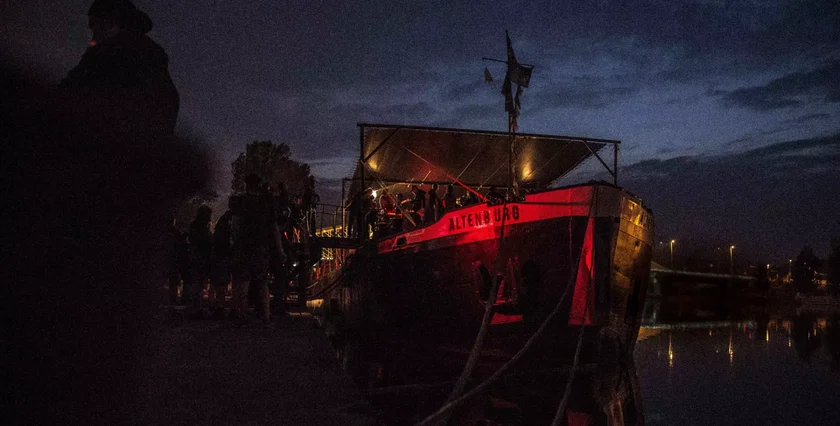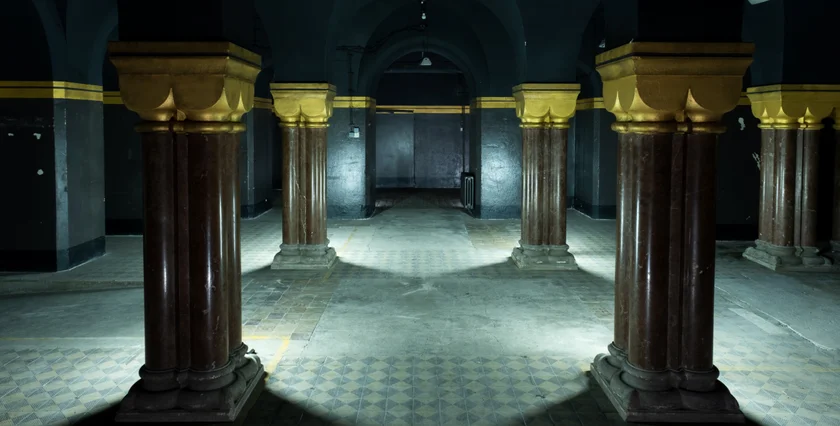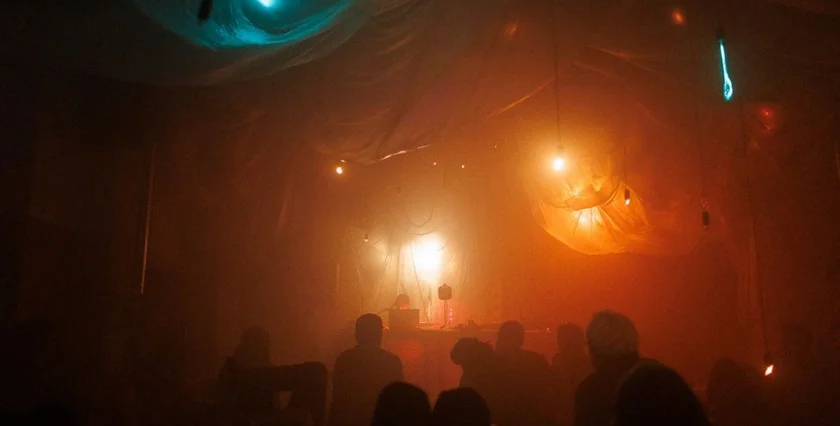It’s six o’clock in the morning in a secluded forest near Prague’s Bohnice cemetery. Through a light screen of fog, the first rays of sunlight capture unfaltering ravers with streaky makeup, dark-lens sunglasses, and sweat and glitter upon their cheeks—they are still dancing.
In the clearing, a beautiful convergence of sound, art, Czechs and internationals is simmering to an end, after 10 hours of frenetic raving organized by Prague-based techno collective hereandthere. The location? Shared exclusively via an encrypted messaging app. The purpose? For Sasa of hereandthere, it’s a little more than partying.
“I saw all my friends coming together and celebrating. That’s why I think I love doing this. We’re celebrating this new little society that we created together,” said Sasa, reflecting on hereandthere’s wildly successful anniversary party held in July of this year.
When people think ‘techno’, Berlin is the obvious city of choice in Europe, with its relentless parties, industrial backdrop, and cool ästhetisch. But something is happening in Prague—and people are noticing.
In the summer of 2022, while shooting in the city for the newly-released film The Crow, multi-hyphenate tastemaker FKA Twigs indulged in Prague’s “amazing underground of East Bloc techno warehouse raves” and “techno kids.” She even confirmed that her third studio album, Eusexua, is inspired by Prague’s rave scene.
Czechia and techno go way back
To characterize all this as a raving new world would be discrediting the long and important history that techno and adjacent genres have in the Czech Republic. Full-scale free parties, also known as teknivals, emerged in Europe in the early 1990s. Sound systems found their way to open spaces, where laws were lax and authorities were scarce.
The phenomenon truly landed in Hostomice in 1994 with the first CzechTek festival—and jumped to different locations each July, from meadows and forests to ex-military land—until 2005 saw brutal police intervention.
“After that, it got in the news—they were like hey, these junkies are dancing to techno in a field,” said Zuzana Hakl, Czech DJ, producer, and co-founder of nūr collective. “But instead of hating it, people started marching in the streets—even old grannies and moms…I think this is somewhat connected to the revolution and being occupied by communists before.”
Zuzana Hakl“Even though grannies hate techno…they were marching for techno.”
Czech president Václav Klaus criticized the incident, a march in Strasbourg protested against restrictive laws and oppression of teknivals in the Czech Republic, and though CzechTek was officially discontinued following its final hurrah in 2006, the scene continued to rumble through the gritty venues of Prague, the secret liminal spaces, and tight communities of DJ’s and tekheads.
Prague's techno scene: A diverse subculture
"When I first started in the scene (circa. 2015), it was mostly Czech. It was rare that an international expat living in Prague was a local artist,” said Yalin, also part of hereandthere and a DJ and producer by the name of Pink Concrete. “It changed because people like us were influenced by what was happening in the scene, saw what was possible, and were inspired to become part of it as well.”
Yalin is from Istanbul and moved to Prague in 2015. Together with Sasa, born in Kazakhstan and living in Prague since he was 13 years old, he has run hereandthere with other creatives, artists, and organizers for two years. And along with the attendees of their parties, the collective is a diverse group.
Sasa“We saw so many new friendships, so many friend groups being created and then falling apart, then being created again…and it’s all because of these parties.”
“You move here as an expat and you don’t have many friends,” said Sasa. “What we organize is mostly for expats or international people, but there are lots of Czech people, too. It’s a very international community so it’s easy for people to be connected.”
Nūr’s parties take on a similar face. Zuzana spoke of the expats she regularly meets at events and in the collective itself, who often have faced harsh circumstances in their life or cannot return to their homes for political reasons—”they can feel like they have family here.”
“It’s very diverse.” Zuzana continued. “It’s mainly expats, and also a lot of the queer community.”
Amidst gothic architecture pierced by brutalist monoliths, a fascinating interplay of elegant architecture and spunk, and a melting pot of nationalities, the off location parties lighting up Prague from nūr, hereandthere, and other collectives are sculpting the city into a distinctive stage for the broader European scene.
Nūr started with parties on the cavernous Altenburg 1964 boat in Holešovice and in Ankali, a former soap factory in Vršovice. They then doubled down on throwing off locations, such as their party in July under Lahovický most. “The vibes were amazing, being on the huge, almost brutalist kind of bridge,” Zuzana said.
A warehouse in Hostivař, a kayaking school in Troja, the basement of the Gabriel Loci monastery, and secret underground bars are just some of the unique off locations hereandthere have organized.
Yalin, Sasa, and Zuzana have witnessed immense change in over a decade of involvement in the scene. In its current form, the underground rave culture in Prague seems to be simmering at the surface of a popular breakthrough, in a blissful phase of close-knit community while being ubiquitous in the city’s nightlife. Stray from any commercial club in Prague and it’ll be hard to miss the passionate, often expat DJ’s, artists, and ravers who run a circuit of alternative venues.
Prague vs. Berlin: A notable shift?
In response to the comparison between Prague and Berlin, and whether the former city’s scene can be preserved in its current effervescent bubble, Sasa believes things are shifting.
“The Western metropolitan cities are becoming more and more expensive. And for people like us who are creative expats, it’s more and more difficult to live there,” he said, adding that Prague is seeing an influx of expat artists. “It is fascinating to see how in two years the expat community started to dominate the scene," he continues, referring specifically to the community of expat collectives. "In every space you will see expats, whereas they used to be behind the scenes.”
upcoming parties
- Friday, Nov. 1: SOUND at Gabriel Loci monastery
- Friday, Nov. 15: Temple Of at Ankali and Planeta Za
- Friday, Nov. 22: Komiks Warehouse at Ex Power Station
As artists in the mainstream such as Charli XCX and Troye Sivan bring the pumping influence of underground club music to the pop domain, there’s no doubt more and more ears will be tuned in to techno, and heads turned toward global raving hot-spots—meaning Prague’s etching on the map might be further engrained in years to come.
Reflecting on a party in an unnamed, underground location—where heat and sweat coagulates on cavern walls, bodies bounce to and from candlelit rooms, and water drips from a leaky ceiling—Sasa explains the transcendent experiences he lives to curate, which bring people from all ends of the globe to a common space.
“We created a holy environment where everyone became one organism. Three hundred to 400 people moving together as a symposium.”
You can keep up with nūr and hereandthere on Instagram and find regularly updated events through Resident Advisor.












 Reading time: 6 minutes
Reading time: 6 minutes 